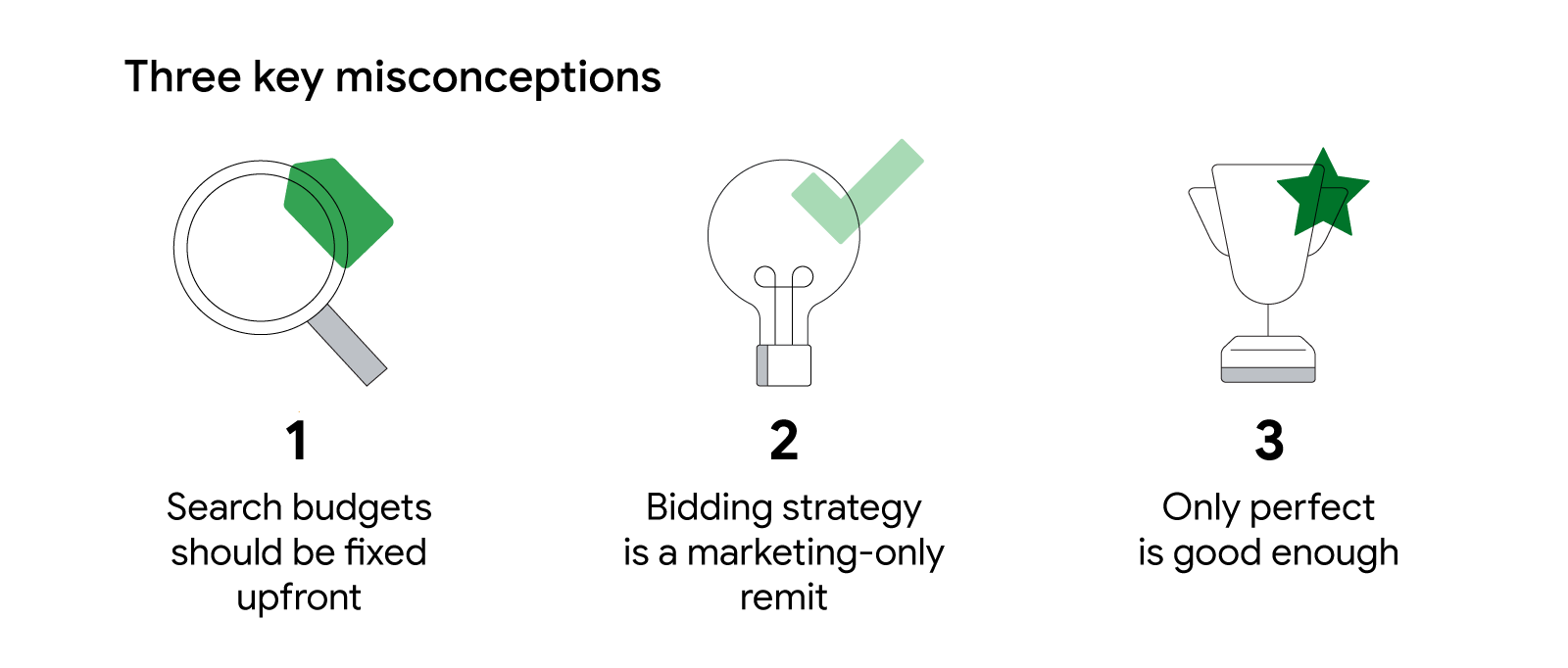As a result of Covid-19, we have seen immense growth in customers’ online intent, accelerating an underlying trend of consumers moving online to discover, research, and purchase. The strategic imperative for businesses to unlock the growing power of search has never been higher. But in an environment where demand is increasingly volatile, margins are under pressure, and the consumer journey has become more complex, doing so is increasingly challenging.
A lack of confidence in data models and work-in-progress digital transformation journeys are often cited as common challenges by businesses seeking to maximise the potential of their search investment. Yet, data and digital capabilities are rarely the main reason value is foregone.
Culture and process are often the bigger barriers — and nowhere is this more critical than the relationship between marketing and finance teams. When these teams collaborate, we see businesses unlocking the opportunity for further growth.
But when they don’t — which is frequently the case — this disconnect can really limit the value of paid media.
When marketing and finance work collaboratively, we see businesses unlocking the power of search.
Here, we’ve identified three key misconceptions driving this disconnect — with actionable steps on how to move past them. The goal: to find the alignment essential for unlocking additional profitable growth on search.

Misconception 1: Search budgets should be fixed upfront
A volatile and unpredictable environment demands flexibility — especially with a product like Google Search, where investment should fluctuate to capture changing consumer demand. Yet finance teams often fix search spend upfront, resulting in two potential risks:
- Artificial capping of growth: This can mean missing out on unforeseen consumer demand when budgets run dry.
- Optimising to meet set expenditure: Marketing teams are possibly incentivised to pursue unprofitable clicks with a “use it or lose it” budget mindset.
In practice, search budgets should flex based on how much consumers are searching and be treated as a variable cost linked directly to revenue. Finance can empower marketing by allowing investment to be quickly scaled up or down in line with market conditions.
Those businesses that take this demand-driven approach to search are best placed to capture rising consumer demand, with those less agile falling behind.
Recommended action: Flex your search investment in line with demand
There is no need to fly blind. Use tools such as Google Trends and Keyword Planner to keep pace with changing customer behaviours as seen through search interest and to estimate what spend might be required at different return targets.
Then, align your expenditure with this real-time data on an ongoing basis, as opposed to setting an artificial cap on profits upfront.
Misconception 2: Bidding strategy is a marketing-only remit
The right bidding strategy is unquestionably the most important factor to maximise value from search investment. Bid too much, and you risk overpaying for a click. Bid too little, and you may lose a profitable purchase to the competition.
Taking a holistic view and ensuring your bidding strategy is really optimised to maximise profit can be transformative for business results.
Suboptimal bidding is often the result of marketing teams working without the right financial data to make informed bids. Instead, finance should be actively involved in determining bidding strategy, setting a target return on advertising spend (tROAS) based on profitability analysis and then incentivising marketing to capture all customer conversions above that target. Yet all too often, we don’t see finance working closely enough with marketing to optimise how return targets are set. For example:
- Product profitability: Segmenting products by profit and not just revenue, and bidding more for higher margin items.
- Customer value: Bidding more for consumers with higher intent or higher lifetime value.
- Omnichannel impact: Accounting for the full value of search investment both online and offline.
It might seem time-consuming to get so granular on setting target return levels, but taking a holistic view and ensuring your bidding strategy is really optimised to maximise profit can be transformative.
It means finance and marketing are no longer battling it out over budget levels but instead working hand in hand to better understand customer economics and maximising profit growth.
Recommended action: Segment and automate for profitable growth
Finance should undertake analysis to get the right tROAS levels by incorporating the offline impact of search and segmenting customers based on profitability. While you might not be able to calculate this on a granular level, even establishing a high, medium, and low segmentation is a great start.
Once this work is complete, use automated Smart Bidding as a better way to optimise investment and ensure tROAS levels are achieved. Automation also eliminates work, allowing marketing and finance to focus more on tROAS and lifetime value calculations – collaborating on getting these estimates right will help businesses thrive.
Misconception 3: Only perfect is good enough
A common challenge faced by businesses is a mindset that they can’t change their search investment strategy until they have the perfect model: one that allows marketing to give finance bulletproof certainty on returns for every pound spent. But, in practice, the road to modelling perfection is never-ending and while it is being travelled, business decisions still need to be made.
The great advantage of search is that changes to investment strategy can be trialled on a small scale (for example, one region) first and modified immediately, based on business results that are typically available in real time.
This means marketers can run low cost, tightly controlled experiments that achieve incremental improvement with minimal risk. Together, finance and marketing can then assess whether — on balance — the change is likely to have added value and scale if so, rather than foregoing potential opportunity until the perfect model has been created.
Indeed, with search, improvement doesn’t require some costly update of legacy data systems but rather a cultural and process shift. Accepting that uncertainty exists, and having a “test and learn” framework between marketing and finance to successfully navigate it, is the key to success.
Recommended action: Test, learn, scale — and repeat
Finance should equip marketing teams with budget to conduct small-scale experiments within an agreed set of guardrails to ensure that no opportunity is missed as consumer behaviour changes and models improve. Build a simple performance dashboard to jointly monitor key outcomes such as revenue, margin, return on investment, and click share. You can then use this data to continuously refine, scale, and repeat.
A checklist for finance and marketing alignment

There are many ways finance can help marketing deliver better business results, starting with the best practices we’ve outlined above — but shifting the focus from simply measuring performance to actually enhancing it is one of the most vital. To make this shift, keep the following front of mind:
- Be flexible, not fixed: Monitor search interest to identify fast-rising search categories and let consumer demand determine how much you invest in search.
- Capture every profitable click: Finance and marketing should collaborate to get the right target return on ad spend, use Smart Bidding to execute, and then measure success based on how much money is generated at the target return level, not on hitting budget.
- Test and learn to unlock growth: Don’t miss opportunities while waiting for perfect models. Instead, set a small budget for low-risk tests, then continuously refine, scale, and repeat, using a shared KPI dashboard to assess value.








